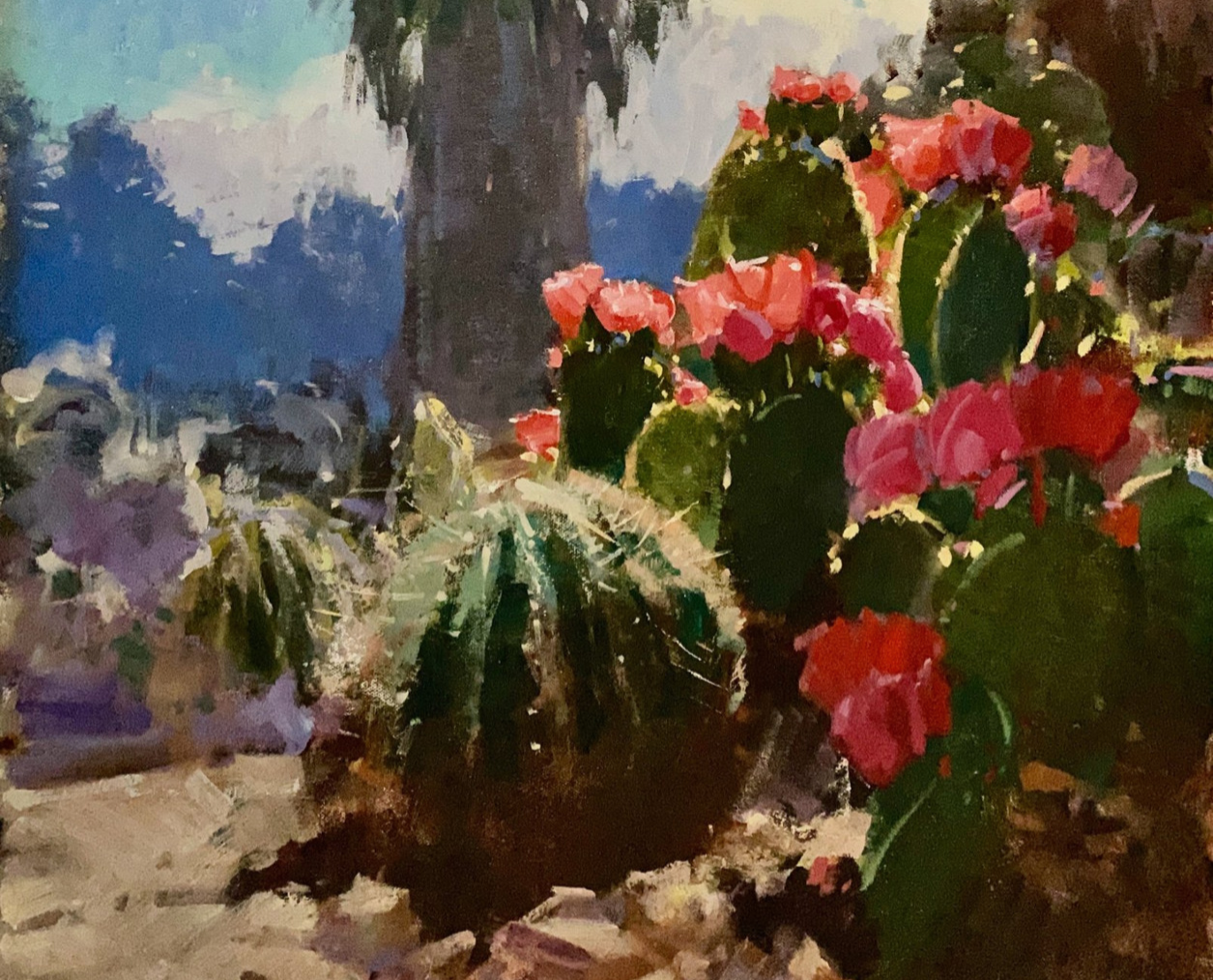Find a Different Way to Paint!
featuring words from Randy Sexton
Randy Sexton was a very diverse artist. He has excellent drawing skills and paints landscapes, still life, figurative, and even abstract.
When Randy started painting outside his comfort zone, he had to give himself permission and allow himself to paint in different ways. Randy encourages people to “pound the pavement” or get out and seek opportunities. For example, Randy recently had a group show he participated in called “Transitions.” When he agreed to do the show, it motivated him to start a series he would not have done or thought of doing otherwise. This show launched him into six pieces he had fun painting that were different from his usual painting style.
Sometimes it is not about figuring out what to paint next but about opportunities that arise that you can say yes to you! Having a little pressure to paint outside the box will energize you to come up with some new work. Discomfort can shape itself into different types of painting that you never knew you could do.
Randy also allows the paint to play. The paint plays in the loose brush strokes, building up paint in certain places to create dimension and more. Sometimes, it is simply allowing yourself to play with paint without making it look like anything. Randy likes to build up texture in an abstract painting and plays with intuitive and fun things. Since Randy started experimenting with abstract work, he has seen similar paint movements in his larger and more representational work. An area that Randy has worked on in his abstract pieces is just responding to what is on the canvas and not working with a subject matter. He lets his work be an intuitive response to what is there.
At times, it simply allows you to play with paint without feeling the need to make it look like anything. For artists struggling with painting the same thing and wanting to expand, Randy recommends simply exposing yourself to more artwork. It is important to learn from other artists, too. There are so many out there, past and present! Look and see what is out there and see what you like. For beginners, take your time and realize you can’t do everything at once. Painting is almost like learning another language; starting slow is okay.
Want more tips like this from Randy?
Find more details on Randy’s self- study course, “From Seen to Scene.” Click to find out more:
Also, check out Randy’s video download package, “Let Your Brush Sing! How to Push Paint to the Edge:”
To learn more about painting outside the box, listen to Gabor and Randy on the Concept to Canvas podcast here.


